Death Wish II is a 1982 American vigilante action film directed and co-edited by the English filmmaker Michael Winner. It is the first of four sequels to the 1974 film Death Wish. In the story, architect Paul Kersey (Charles Bronson) moves to Los Angeles with his daughter (Robin Sherwood). After his daughter is murdered at the hands of several gang members, Kersey is once again forced to become a vigilante. Unlike the original, in which he hunts down every criminal he encounters, Kersey only pursues his family's attackers. The sequel makes a complete breakaway from the Brian Garfield novels Death Wish and Death Sentence, redefining the Paul Kersey character.
| Death Wish II | |
|---|---|
Theatrical release poster | |
| Directed by | Michael Winner |
| Produced by | Menahem Golan Yoram Globus |
| Written by | David Engelbach |
| Based on | Characters by Brian Garfield |
| Starring |
|
| Music by | Jimmy Page |
| Cinematography | Thomas Del Ruth Richard H. Kline |
| Edited by | Julian Semilian Michael Winner (as Arnold Crust) |
Production companies | American-European Productions Golan-Globus Productions Landers-Roberts Productions City Films |
| Distributed by | Filmways Pictures (NA) Columbia Pictures (International) |
Release date |
|
Running time | 88 minutes |
| Country | United States |
| Language | English |
| Budget | $8 million |
| Box office | $16.1 million (North America) |
The sequel was produced by Cannon Films, which had purchased the rights to the Death Wish concept from Dino De Laurentiis. Cannon executive Menahem Golan planned to direct the film, but Winner returned on Bronson's insistence. The soundtrack was composed by guitarist Jimmy Page. Death Wish II was released in the United States in February 1982 by Filmways Pictures but like the original, Columbia Pictures handled the international release and Paramount Pictures via Trifecta Entertainment & Media handles the television rights. It earned $16.1 million during its domestic theatrical run.
Screenplay
Paul Kersey has managed to recover from his shattered life and moved on, and is now dating an L.A. radio reporter Geri Nichols. They go to pick up Kersey's daughter Carol from the mental hospital. They spend the afternoon at a fairground, where Paul's wallet is stolen by a gang consisting of Nirvana, Punkcut, Stomper, Cutter, and Jiver. The gang split up when Paul chases them; he goes to pursue Jiver, whom he corners in an alley, but lets him go after Jiver tells him that he does not have the wallet.
The gang find Paul's home address in his wallet and later breaks into his house, where they rape the housekeeper, Rosario. When Paul arrives home with his daughter, he is beaten unconscious. Rosario tries to call the police, but Nirvana kills her with his crowbar. They kidnap Carol, take her to their hideout, where one of the gang members rape her. Carol attempts to flee by running through a plate glass window, and falls onto an iron fence and is impaled.
When the police arrive, Lieutenant Mankewicz asks for help identifying the muggers, but Paul refuses. After Carol's funeral, he takes a handgun to a low-rent inner city hotel as a base of operations. The next evening, he observes and follows Stomper into an abandoned building as a drug deal is about to be made. Paul kills one of the dealers, then orders the others out, before proceeding to shoot Stomper dead. The following night, he hears screams from a couple being assaulted by four muggers, which includes Jiver, in a parking garage. Paul kills two hoodlums and wounds Jiver. He follows Jiver's blood trail to an abandoned warehouse and shoots him dead.
The LAPD and NYPD hear about the murders. When Kersey falls under suspicion, NYPD Detective Frank Ochoa is called in to investigate the case. Ochoa fears that Kersey, when caught, will reveal that he was released without charge eight years ago instead of being prosecuted for killing ten muggers. Ochoa meets with Mankewicz, who suspects Ochoa is giving false information to him. Ochoa intrudes into Geri's apartment and tells her about Paul's previous vigilante killing spree back in New York. After Paul returns to his house, Geri confronts her lover about Ochoa's revelation, but he denies it.
Ochoa follows Kersey to a local square where Kersey is tailing the three remaining gang members. He follows them to an abandoned park, where a major arms and drug deal is underway. A sniper scouts Kersey and attempts to kill him, but Ochoa warns Paul and shoots the sniper dead. Ochoa is mortally wounded by Nirvana, while Paul kills Cutter, another dealer and wounds Punkcut. The arms dealer tries to get away but Paul shoots him, causing the criminal to drive off a cliff, while Nirvana escapes. Ochoa tells Paul to avenge him before he dies. Paul escapes while Punkcut dies from his injuries after giving information about Nirvana to the police.
Paul learns from one of Geri's colleagues that the police are preparing a tactical unit to capture Nirvana. He obtains a police scanner, and by monitoring police radio traffic, finds out when and where the arrest is going to take place. He drives to the location to kill him, but Nirvana, under the influence of PCP, slashes his arm and stabs a few officers while trying to escape. Tried and found criminally insane, he is sent to a mental institution. Geri and Paul visit him, requesting an interview, but are turned down by corrupt medics. While there, Paul steals a doctor's ID card. The next night, Paul uses it to enter the asylum and confronts Nirvana. Despite being stabbed repeatedly with a scalpel, Paul manages to kill Nirvana by electrocution. A sympathetic attendant gives Paul three minutes to escape before hitting the alarm.
Geri goes to Paul's house, where she finds out how he made his fake ID. Upon hearing a news report of Nirvana's death on the radio, she realizes that Paul really is the vigilante Ochoa claimed him to be. She takes off her engagement ring and leaves him, with Paul arriving moments later.
A few months later, Paul is speaking about a new architectural design. He is invited by his employer to a party, and when Paul is asked if he is able to attend, he answers: "What else would I be doing?" His shadowy figure walks in the night, followed by three gunshots.
- Charles Bronson as Paul Kersey
- Jill Ireland as Geri Nichols
- Vincent Gardenia as Det. Frank Ochoa
- J.D. Cannon as New York District Attorney
- Anthony Franciosa as LA Police Commissioner
- Robin Sherwood as Carol Kersey
- Charles Cyphers as Ronald Kay
- Ben Frank as Inspector Lt. Mankiewicz
- Paul Comi as Senator Robert McLean
- Michael Prince as Elliot Cass
- Thomas F. Duffy as Charles Wilson aka Nirvana
- Laurence Fishburne III as Cutter
- Kevyn Major Howard as Stomper
- Stuart K. Robinson as Jiver
- E. Lamont Johnson as Punkcut
- Silvana Gallardo as Rosario
- Robert F. Lyons as Fred McKenzie
- Frank Campanella as Judge Lake
- Don Dubbins as Mike
- Buck Young as Charles Pearce
Development
Brian Garfield, author of the original Death Wish novel, was so unhappy with the film version that he wrote his own sequel, Death Sentence. "They'd made a hero out of him," said Garfield. "I thought I'd shown that he'd become a very sick man."
The idea to produce a sequel to Death Wish (1974) originated with producers Menahem Golan and Yoram Globus, owners of Cannon Films. They reportedly announced their plans to do so prior to actually securing the rights to the franchise. Dino De Laurentiis co-producer of the original film, threatened them with a lawsuit unless they properly purchased the rights. He negotiated payments for himself, co-producers Hal Landers and Bobby Roberts, and original author Brian Garfield. The agreement included future payments for each prospective sequel.
Cannon did not want to use Garfield's book, preferring an original story by David Engelbach, Golan and Hal Landers. "We think our story is a better film story," said Golan.
"You cannot call a film exploitative just because it touches on disturbing issues," said Globus. "Both Death Wish films are a valid comment on American society... the theme of street violence getting out of control is sadly more of a fact of life than it was seven years ago."
David Engelbach was then tasked with writing the screenplay. Bronson was offered $1.5 million to reprise the role. Jill Ireland was cast in the film because Bronson, her husband, insisted on it. She serves as both the love interest to Kersey and the voice of opposition to the death penalty.
Cannon initially tasked Golan with directing the film, but Bronson insisted on instead recruiting Michael Winner, the director of the original. Winner had suffered a downturn in his career since the mid-1970s, with no box office hit since Death Wish. He agreed to return to the franchise and also took the initiative in revising Engelbach's script. Winner recalled that De Laurentiis was having second thoughts about letting someone else produce the sequel, and offered to hire him to do the film for his own production company. Winner refused and De Laurentiis did not renege on his deal with Cannon. The producer did, however, start work on a "clone" of the film. The final result was Fighting Back (1982).
Winner said the sequel was pertinent because "mugging is now a bigger issue in America. It's spread to towns where it was not a problem before. In Beverly Hills, instead of talking about other people's failed movies – thank God, something has stopped them at last – they talk about their muggings."
The film introduced significant changes for the character of Paul Kersey. One involved his modus operandi as a vigilante. In the original film, Kersey would shoot and kill every criminal in his vicinity. In the sequel, he is after five specific criminals who are responsible for the death of his daughter. His single-minded pursuit extends to ignoring other potential targets. He is seen to mostly ignore thieves, drug dealers, and one violent pimp. Another change involves his abilities. In the first film, his activities as a vigilante rely only on his use of weapons. In the sequel he is able to beat up men considerably younger than himself.
Among the final revisions of the script was a change in location. The original script set the action in San Francisco, while the revision moved the setting to Los Angeles.
Winner said the film was "the same, but different," to the original. "That's what sequels are – Rocky II, Rocky III – you don't see Sylvester Stallone move to the Congo and become a nurse. Here the look of LA is what's different. Besides – rape doesn't date!"
Screenwriter David Engelbach argued the film raised "serious issues – namely, the deteriorating state of our criminal justice system. The actions of the Bronson character are dictated by the inability of the police to prevent crime, the preoccupation of the courts with technical rather than real justice, and the cancerous climate of fear in which we find ourselves today. Paul Kersey is no hero. In his pursuit of vengeance he loses the only emotional relationship of his life and by story's end has become as much a victim of crime as the thugs he leaves dead in his wake."
Shooting
The film was shot on location and depicted actual "sleazy" areas of the city. Twenty off-duty men of the Los Angeles Police Department were hired to protect the film cast and crew from potential trouble. A scene involving the abandoned and crumpling Hollywood Hotel was shot in an actual abandoned hotel, months before it was demolished.
Several of the extras of the film were various locals who were either hired to play a bit part or happened to be passing by during a shooting. Among them were drug addicts, a drag queen, Hare Krishnas and bikers. All included by the director in an attempt to get an authentic feel of the streets of Los Angeles.
Winner tried to keep the mood on the set lighthearted. "Just because a film is terrifying, that doesn't mean the people making it have to be grim," he said.
Music
Isaac Hayes was recommended by the producers of the film to compose the score; however, Michael Winner chose former Led Zeppelin guitarist Jimmy Page (who was Winner's neighbor at the time). The opening credits bear Page's signature guitar tone, along with the heavy reverb-laden drum sound that he used with Led Zeppelin. The film's soundtrack was released in February 1982. Portions of the score were sampled by Twiztid in the song "Spiderwebs" from their album Heartbroken & Homicidal.
Can
Watch movie Death Wish Ii online on Amazon
Watch movie Death Wish Ii online
Watch The Movie On PrimeWoh Main Nahin Full HD Movie Download
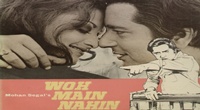
Punnagai Mannan Full HD Movie Download
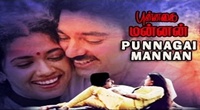
Free Love Full HD Movie Download
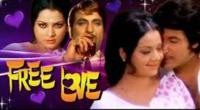
Patita Full HD Movie Download

Raja Jani Full HD Movie Download
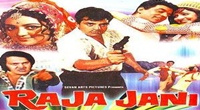
Sanam Teri Kasam Full HD Movie Download
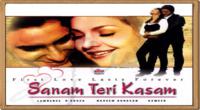
Chhota Sa Ghar Full HD Movie Download
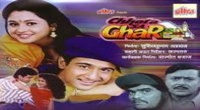
Hoshiyar Full HD Movie Download
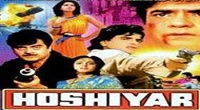
Insaaniyat (1955) Full HD Movie Download
.jpg)
Satyameba Jayate Full HD Movie Download
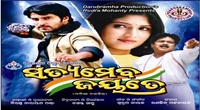
Meri Adalat Full HD Movie Download

Chal Gajya Karu Majaa Full HD Movie Download
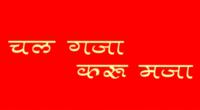
Love Game Full HD Movie Download
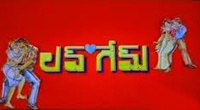
Dhanush Full HD Movie Download
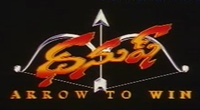
Aayudham Full HD Movie Download
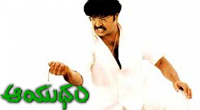
Nelavanka Full HD Movie Download

Aithey Entee Full HD Movie Download

An Evening in Paris Full HD Movie Download
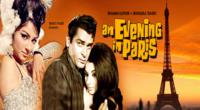
Kati Patang Full HD Movie Download
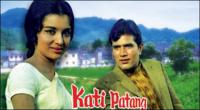
Jhoom Barabar Jhoom Full HD Movie Download

Faasle Full HD Movie Download
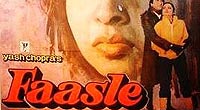
Download latest Movie from bollywood
- 1> baaghi 3
- 2> THE SKY IS PINK MOVIE FULL STORY AND REVIEW
- 3> Luka Chuppi
- 4> TO ALL THE BOYS I’VE LOVED BEFORE
- 5> Kabir Singh
- 6> Street Dancer 3D
- 7> Simmba
- 8> Gone Girl
- 9> The Girl Who Lived
- 10> Ludo
- 11> DILWALE DULHANIA LE JAYENGE
- 12> GUILTY
- 13> The Godfather
- 14> Adventures of Rusty
- 15> Sooryavanshi
- 16> Satyameva Jayate 2
- 17> Thappad
- 18> Bhool Bhulaiyaa 2
- 19> KGFChapter 2
- 20> Mardaani 2
- 21> Pinjar
- 22> Shivaji maharaj
- 23> Ek Villian 2
- 24> Hungama 2
- 25> Divergent
- 26> Mumbai Saga
- 27> The Internship
- 28> HIT (telugu)
- 29> Panga
- 30> The perfect date
- 31> 16 December
- 32> Gopala Gopala (Telugu)
- 33> Brahmastra
- 34> Gangubai Kathiawadi
- 35> Manmadhudu
- 36> Nenu local
- 37> Mahanati
- 38> Shatamanam bavathi
- 39> Lagaan
- 40> After
- 41> MOM
- 42> Shamshera
- 43> Raguvaran BTech
- 44> Khakee
- 45> The villain
- 46> OM
- 47> Mr. perfect
- 48> Bueatifull mind
- 49> Hichki
- 50> Gabbar Singh
- 51> Jogi
- 52> Before Sunrise
- 53> Before Sunset
- 54> Before Midnight
- 55> The Big Bull
- 56> Top Gun: Maverick
- 57> The Purge
- 58> The Sky is Pink
- 59> Laxmmi Bomb
- 60> Sadak 2
- 61> Sufna
- 62> Prithviraj
- 63> PK
- 64> Coolie No 1(2020)
- 65> Black Widow
- 66> Dear Zindagi
- 67> Dil Bechara
- 68> PHIR HERA PHERI
- 69> WAR
- 70> Dostana
- 71> RRR: Roudram Ranam Rudhiram
- 72> Maidan
- 73> Dabbang 3
- 74> Chhalaang
- 75> life as we know it
- 76> SherShaah
- 77> Sandeep Aur Pinky Faraar
- 78> Event Horizon
- 79> 83
- 80> Radhe: Your Most Wanted Bhai
- 81> Gunjan Saxena: The Kargil Girl
- 82> Mr India
- 83> Vivah
- 84> Anokha Bandhan
- 85> Ghost
- 86> Bhoot: Part One - The Haunted Ship
- 87> Haseen Dilruba
- 88> Laal Singh Chaddha
- 89> Qismat
- 90> Rajput
- 91> Drive
- 92> Dil Chahta Hai
- 93> Dil Ki Baazi
- 94> Dil Ka Rishta
- 95> Teesri Manzil
- 96> Dil
- 97> Love Aaj Kal
- 98> Khaali Peeli
- 99> Bunty Aur Babli 2
- 100> Atrangi Re
- 101> Gulabo Sitabo
- 102> Jodi
- 103> Suraj Pe Mangal Bhari
- 104> Deewana
- 105> Attack
- 106> Sardar Udham Singh
- 107> Toofan
- 108> THE LOVEBIRDS
- 109> Jersey
- 110> Ginny Weds Sunny
- 111> Thalaivi
- 112> Shiddat
- 113> Angels vs Zombies
- 114> Koi Mil Gya
- 115> Thank God
- 116> Bhuj: The Pride of India
- 117> Hum Aapke Hain Kaun
- 118> The Platform
- 119> Bird Box
- 120> Roohi Afzana
- 121> Torbaaz
- 122> Nikamma
- 123> World War Z
- 124> Extraction
- 125> Train to Busan
- 126> Life of Pi
- 127> SHAADI MEIN JROOR AANA
- 128> Himmat Aur Mehnat
- 129> To All The Boys: P.S. I Still Love You
- 130> Mimi
- 131> Good Newwz
- 132> Shubh Mangal Zyada Saavdhan
- 133> Raabta
- 134> Harry Potter and the Philosopher's Stone
- 135> Harry Potter and the Chamber of Secrets
- 136> Chhapaak
- 137> War of the Worlds
- 138> Harry Potter and the Prisoner of Azkaban
- 139> Harry Potter and the Goblet of Fire
- 140> MURDER MYSTERY
- 141> Shakuntala Devi
- 142> Bachchan Pandey
- 143> Jayeshbhai Jordar
- 144> Sheer Qorma
- 145> Saina
- 146> 'O' Pushpa I hate tears
- 147> Kedarnath
- 148> MS Dhoni The Untold Story
- 149> Chhichhore
- 150> Badhaai Ho
- 151> Unstoppable
- 152> Oz the Great And Powerful
- 153> The Girl on the Train
- 154> Haathi Mere Saathi 2020
- 155> The Conjuring: The Devil Made Me Do It
- 156> Gandhi Se Pehle Gandhi
- 157> The Song of Scorpions
- 158> Srimanthudu
- 159> Hello Guru Prema Kosame
- 160> Beauty and The Beast
- 161> Black Panther
- 162> Charlie and the Chocolate Factory
- 163> Bole Chudiyan
- 164> Fidaa
- 165> Duvvada Jagannadham
- 166> Bruce Lee: The Fighter
- 167> Hyper
- 168> Yaara
- 169> Red (2020)
- 170> Shivam
- 171> That Is Mahalakshmi
- 172> Nishabdham
- 173> Aashram 2020 web series
- 174> Laxmii
- 175> Mismatched
- 176> STUDENT OF THE YEAR 2
- 177> NAIL POLISH
- 178> Ramprasad Ki Tehrvi
- 179> KAAGAZ
- 180> 12 o Clock
- 181> The Power
- 182> bolo hau
- 183> Tribhanga
- 184> JAMUN
- 185> Madam Chief Minister
- 186> Maasaab
- 187> Aadhaar
- 188> Tanhaji
- 189> Bhaagi 3
- 190> Bhootnath
- 191> MALANG
- 192> Jai Mummy Di
- 193> Haathi Mere Saathi 2021
- 194> Shakeela
- 195> Unpaused
- 196> Annayya
- 197> Vamsoddharakudu
- 198> Mrugaraju
- 199> Narasimha Naidu
- 200> Sankranti
- 201> Manasu Maata Vinadhu
- 202> Anjaane
- 203> Apaharan
- 204> Bachke Rehna Re Baba
- 205> Bewafaa
- 206> Roohi
- 207> Radhe
- 208> Zindagi Khoobsoorat Hai
- 209> Yeh Mohabbat Hai
- 210> Yeh Kya Ho Raha Hai?
- 211> The Tomorrow War
- 212> DehradunDiary
- 213> Meri Shaadi Karaoo
- 214> Matruu Ki Bijlee Ka Mandola
- 215> No One Killed Jesica
- 216> Aag Ka Goola
- 217> Eight Million Dollars
- 218> Three Hundred
- 219> Cats and Dog
- 220> Decoy
- 221> Gold Rush
- 222> You Have Got Mail
- 223> Final Destination three
- 224> Tofan
- 225> Jungle
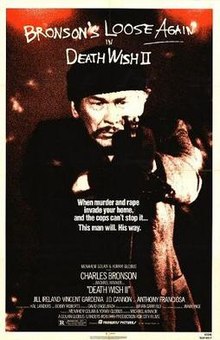 Story of movie Death Wish Ii :
Story of movie Death Wish Ii : 